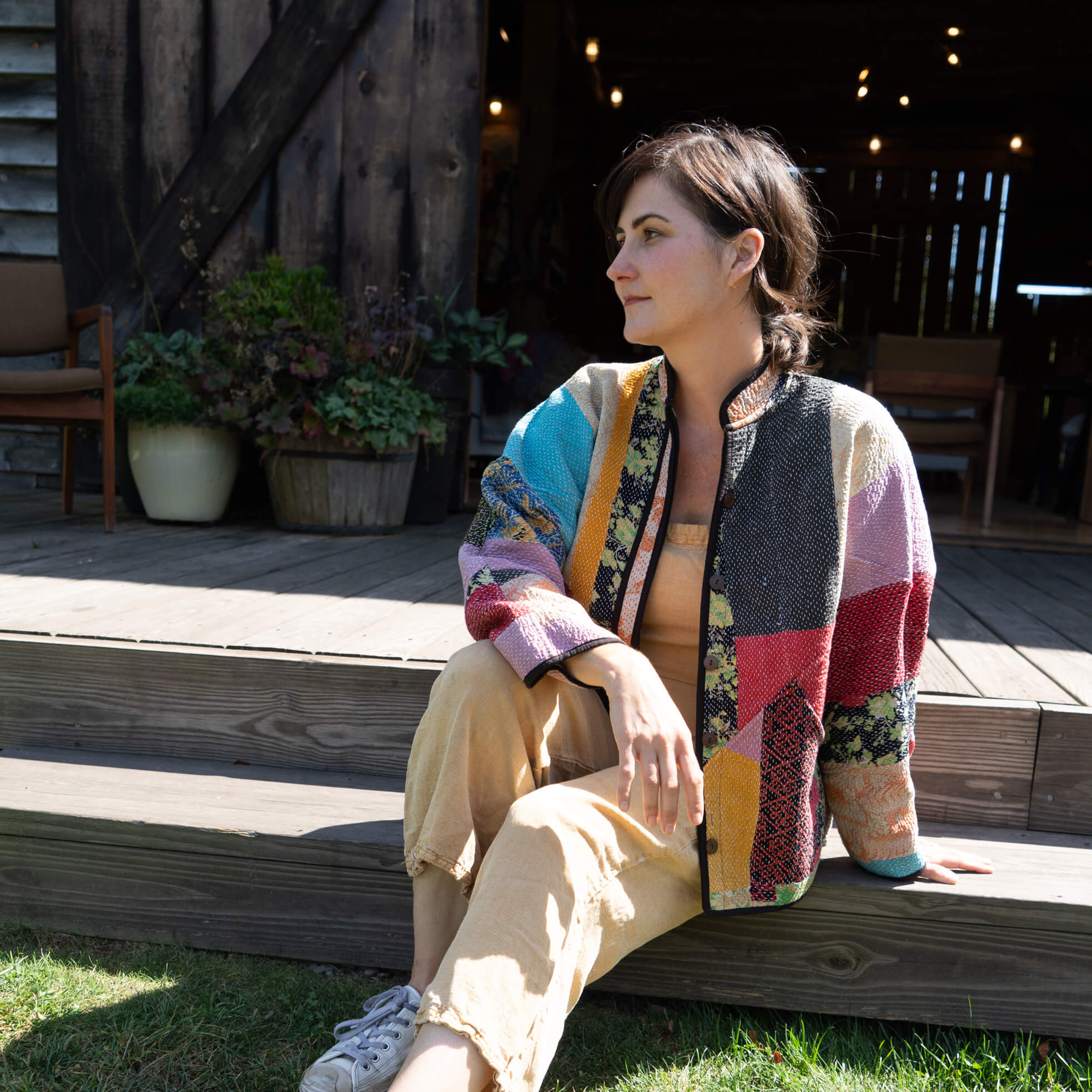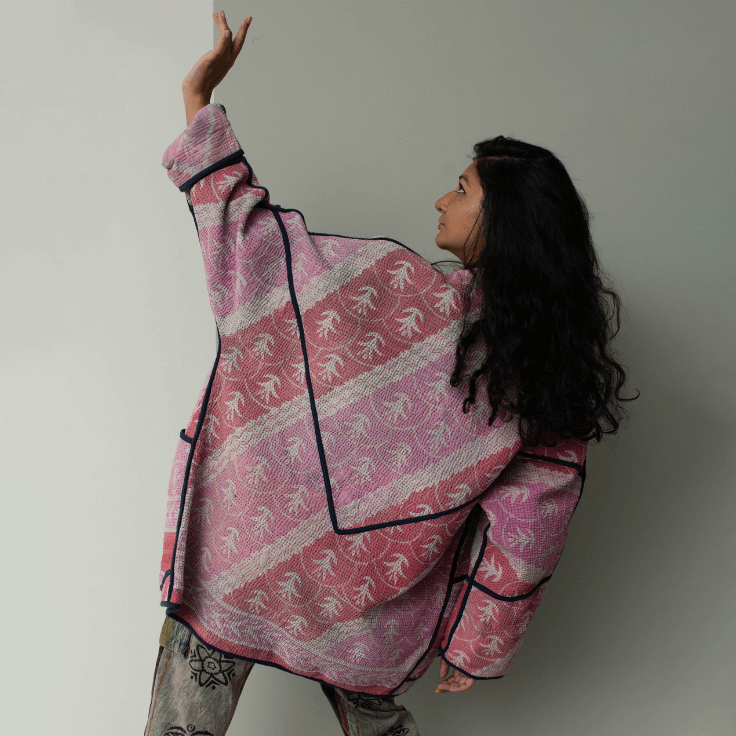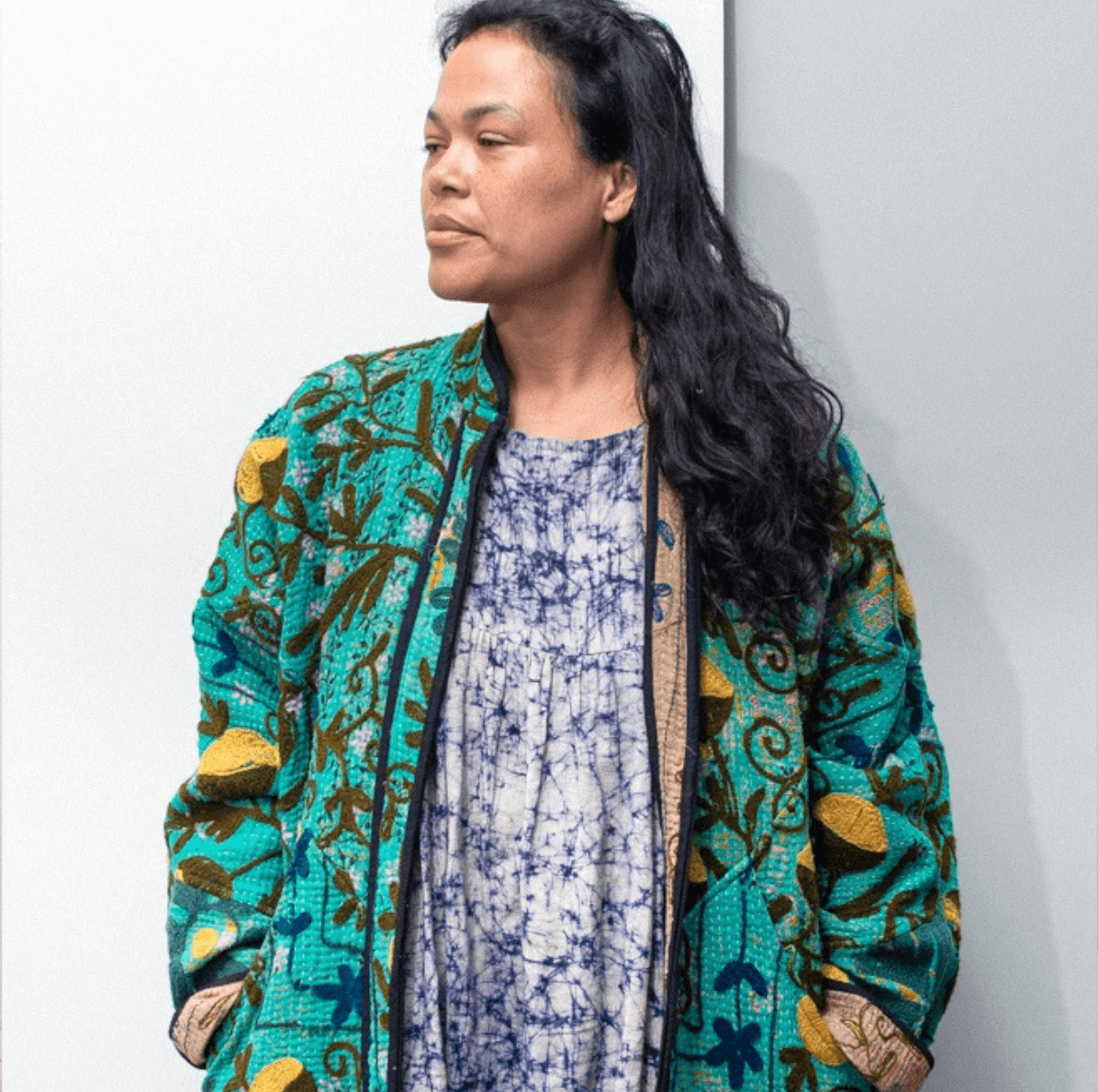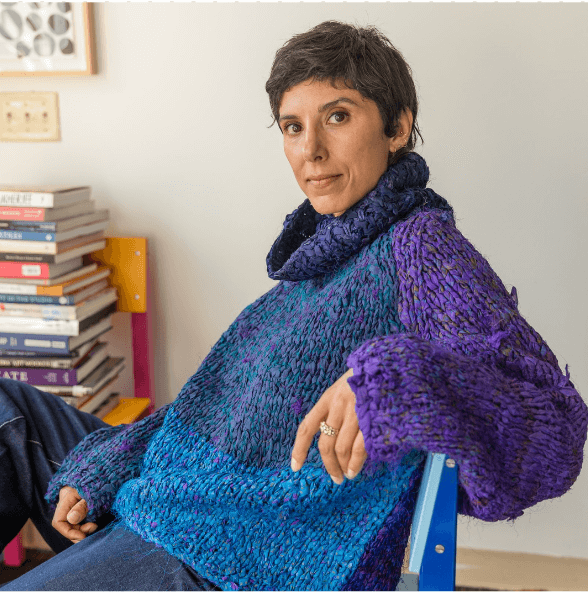Dana McClure is the co owner of Ravenwood, a 19th century barn that has served as the backdrop for intimate farm dinners, art showcases, creative workshops, and brand collaborations. Dana has been a part of New York’s art and design world in many capacities. Beginning her career in 2001 as a graphic designer, she has art directed print, motion and interactive projects for business, non-profit and cultural clients worldwide. Her self-initiated work ranges from limited edition prints and mixed-media collages to hand-printed textiles and objects for the home.
Bianca: How did you get started as a painter?
Dana: My art background began as an undergraduate studying graphic design at Syracuse University. From the start, my ideas about art and design were interdisciplinary and heavily influenced by the Bauhaus, embracing blurry boundaries between the artist and the craftsman. I remember designers like Paul Rand, Barbara Kruger and Paula Scher considering their personal design work to be within the overarching field of art. That stuck with me and although two very different parts of my brain approach art and design work, I see the two processes as heavily influencing each other.
Bianca: Did Ravenwood start alongside your art practice? Did it naturally evolve into being a showcase for art and food?
Dana: Ravenwood started as a project aimed to integrate my world of art + design with my partner Chris’s world of agriculture and food. In 2010, we left Brooklyn after 13 years to build something together in Upstate NY. For over 10 years now, we’ve used our renovated barn space for art shows, dinner parties, and a seasonal farm shop to host an ongoing collaboration – one that centers food and art as catalysts for creative exchange.
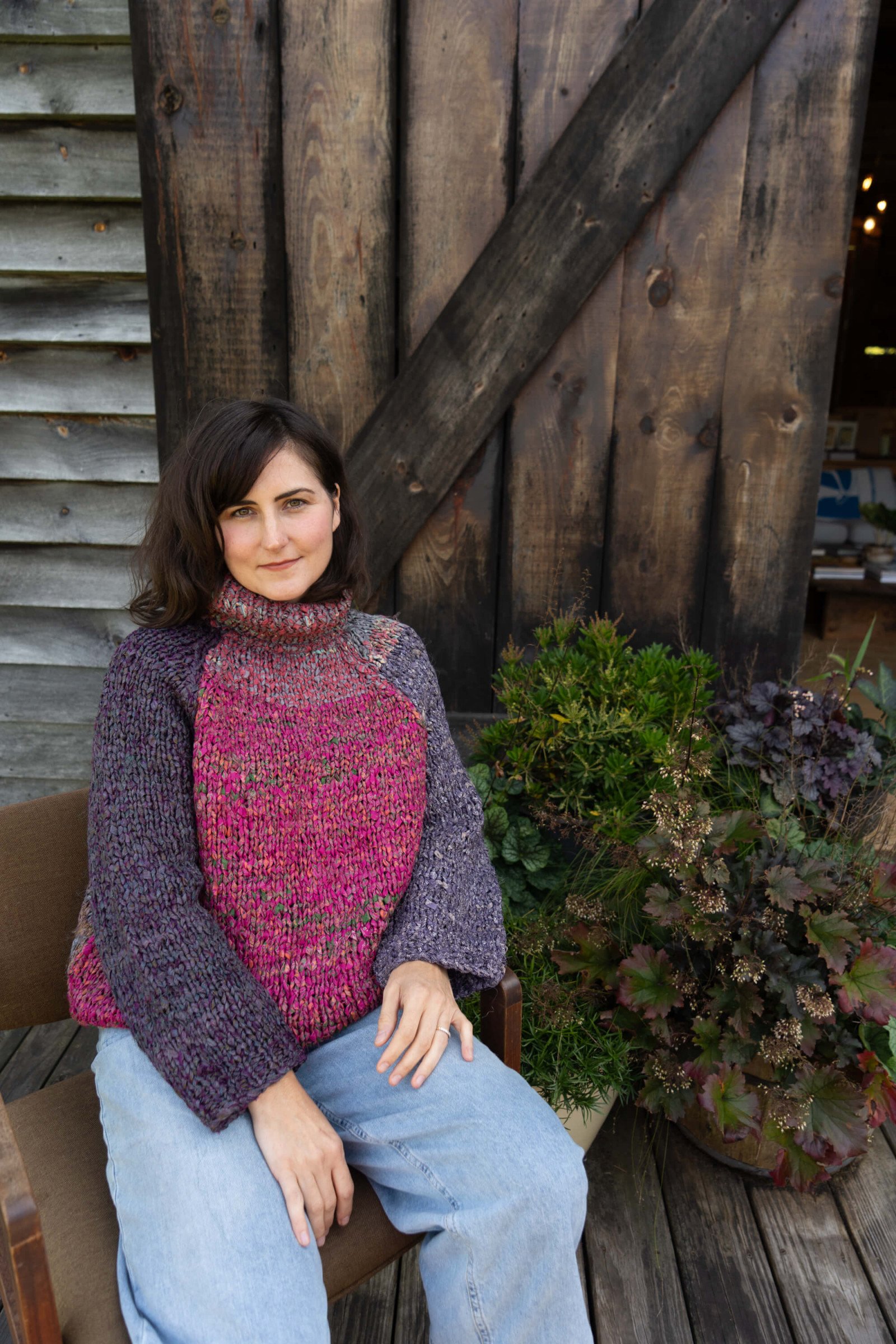
Bianca: When I'm at Ravenwood, it very much feels like there's a strong community around the space. Was community building an intentional part of building the Ravenwood business for you? What part does community play in your life/art/and business practice?
Dana: I’m so happy you have that feeling when you’re in our space. I find it to be the greatest compliment when our guests take their shoes off, walk around by the bonfire and settle in for a few hours. We’re definitely hoping people feel like they are stepping into someone’s living room when they visit the barn and ultimately we’re just trying to make a space that we’d love to stumble upon ourselves.
So in short, yes – building a community and creating a space that feels welcoming and inspiring has always been a primary focus at Ravenwood. A decade ago, we were leaving Brooklyn and also our incredible network of artists, designers, chefs and creative colleagues. We knew no-one upstate and our first friends (now our closest) were also new small-biz owners trying to do something meaningful in this little part of the world – farmers, brewers, distillers, artists, shop owners, musicians etc.
Community plays a huge role in my life as an artist, a business owner, and a parent. I’m not sure how this would all make sense without the people I do life with. I lean heavily on other mothers to raise my kids, my work is deeply inspired by the artists I show in our space and I’m endlessly learning how to be a better business owner from the vulnerability and generosity of our neighboring businesses that we collaborate with. I didn’t want to come upstate and tuck ourselves away and Ravenwood has been a great conduit for staying inspired and connected.

Bianca: I see running my business as part of the creative act as a whole, can you relate? I see that you put a lot of creativity into running your business, do you feel like it is a place where you can express yourself as an artist as well as showcase other artists?
Dana: Well, to be honest, that’s the plan and ultimate goal but also my biggest challenge – to run a retail space AND create art simultaneously. I can’t imagine being a studio artist year-round without the creative outlet and cross-pollination of ideas that our space gives us. I would love to be able to make artwork throughout the farming season while our barn is open – to be responding in real-time to the heightened visual shifts of our region. But running a business and keeping all the plates spinning in the air from May through October (including parenting) is usually more than a full-time job. So, I think about my life and schedule in rhythms and seasons. The warmer months are outward-facing with so much interaction and inspiration coming in. The colder months are more for turning inward, composting all that creative input, and living in a more imaginative headspace. When November rolls around, everyone seems to begin to dread the onset of winter and shorter days. But by then I am usually bursting with ideas to explore in the studio and can’t wait to savor full days in my own head.
Bianca: Amidst running a business and having a family, how (or do you?) find time for self care, and renewing your creativity and staying inspired?
Dana: Well, full transparency – it’s challenging and sometimes impossible. There are times when running the business takes over, also times when the kids take center stage, and if I prioritize what keeps me feeling inspired and alive – times of deep inspiration and creative outlet too. But very seldom do these three aspects of my life exist in perfect harmony or balance. That’s why it’s helpful to consider a rhythm that unfolds each year – a shift in focus from one month to the next. Also, I do really use our business and space as a way to express myself creatively. Each year I create a new gallery wall as a backdrop for our collection and the curation of objects and art is definitely a fulfilling visual experiment for me.

Bianca: This season you painted the back wall of Ravenwood in glorious bright colors. Color is a big part of your artwork, has that always been the case? Where do you think your love of color comes from?
Dana: Yes, it’s funny because the first iteration of Ravenwood’s design collection was neutral and monochromatic. The bountiful produce display on our farm stand was of course a seasonal rainbow but the rest of the space was full of black and white sculptures and cream and brown textiles. I felt limited to that palette for our first season, maybe to pay homage to the 1850s wood interior; maybe as a calm background to the vibrancy of fruits and vegetables. But that direction was a huge disconnect from my own body of work which has always been full of color.
So, the desire to integrate my own artwork into the collection is whats made me transition the space into a more vibrant display. Color relationships in interiors, paintings, garments, films etc. are what give me the most creative thrill and putting two colors side-by-side is usually where an art piece begins for me. In a retail environment, that’s what has drawn me to brands like Namai – the idea of somewhat chance-based color in the form of one-of-a-kind textiles. I love seeing new batches of color combinations and choosing my favorites.
Bianca: Do you use color as a way to affect your mood?
Dana: I definitely do. Our home interior is mostly painted white with paintings from floor-to-ceiling but the bedrooms are all indented to best serve those occupying them. My son’s room is a cool palette of greens and blues and full of natural elements because he’s obsessed with animals and would live out in the woods if we let him. My daughter’s room feels like you’re walking into a chapter of Alice in Wonderland with yellows, reds and pinks and a wild all-encompassing garden mural I painted for her. Our bedroom is the darkest (Ben Moore Soot) and somewhat void of color except for pops of florals in the vases from our garden. I like it to feel dark and cavernous and womb-like with fires lit even in the warmer months.
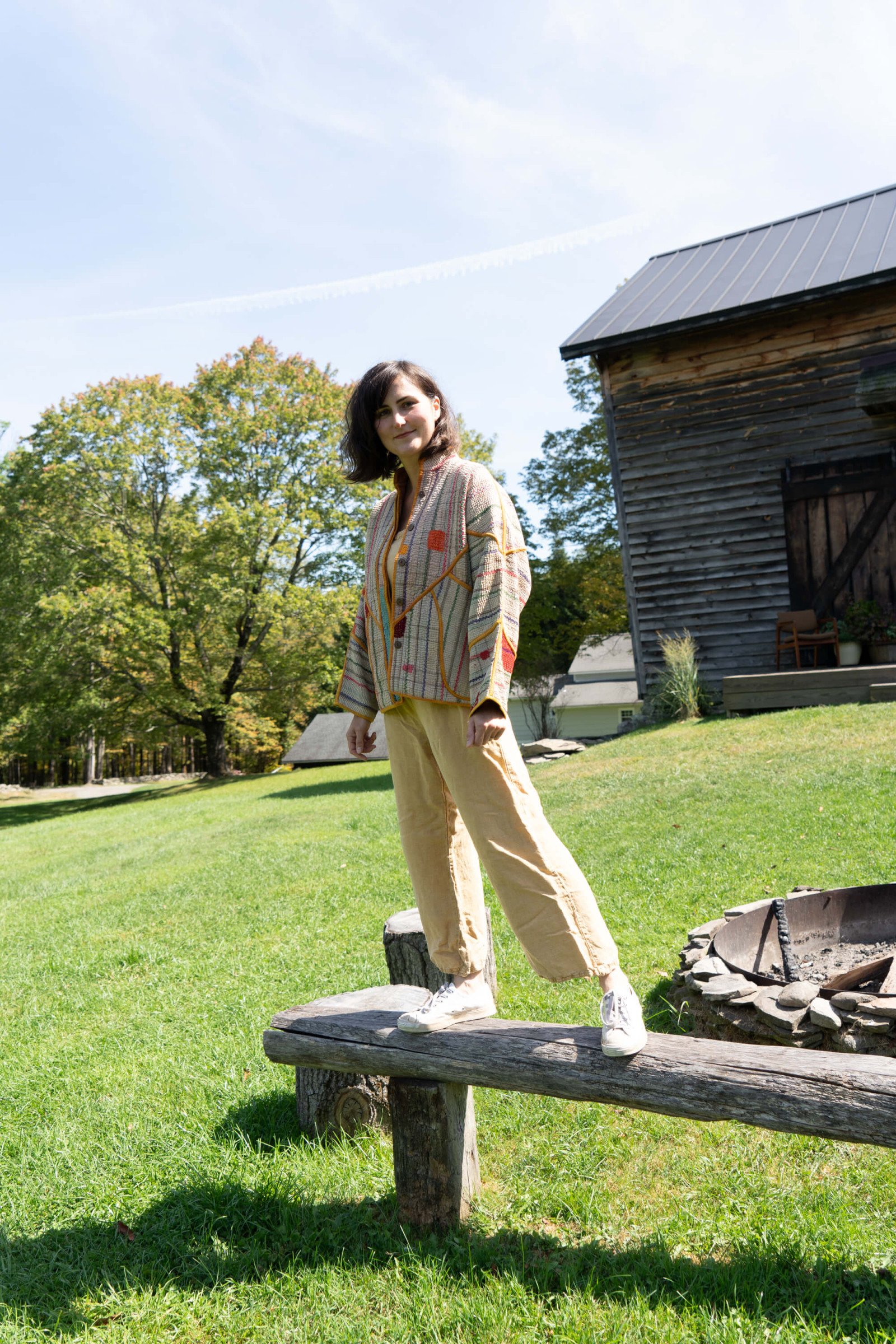
Bianca: It seems like you've found a lot of ways to intermingle your life with your art, family, and are able to make that sustain you. Is there any advice you'd give to aspiring painters and craftspeople on how to unite creativity and art with the day to day reality of making a living?
Dana: I feel that if art-making is really pulling at you and is what drives you, then the sooner you prioritize that practice, the better. I kept it somewhat separate from what monetized my life for far too long - it took a back seat at times but was never fully absent. I see that as the case for many creative people. It’s an ongoing challenge to make a living while keeping your artistic pursuits center stage. I certainly won’t claim to have the answer or any advice in this area. But I can say with certainty that, even in the most difficult times of work/life balance and impossibility, there can be moments of awe, connection and inspiration that keep you moving in the right direction.

